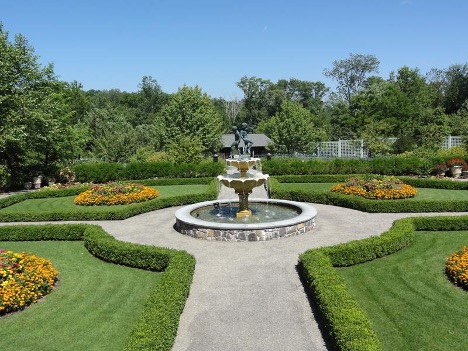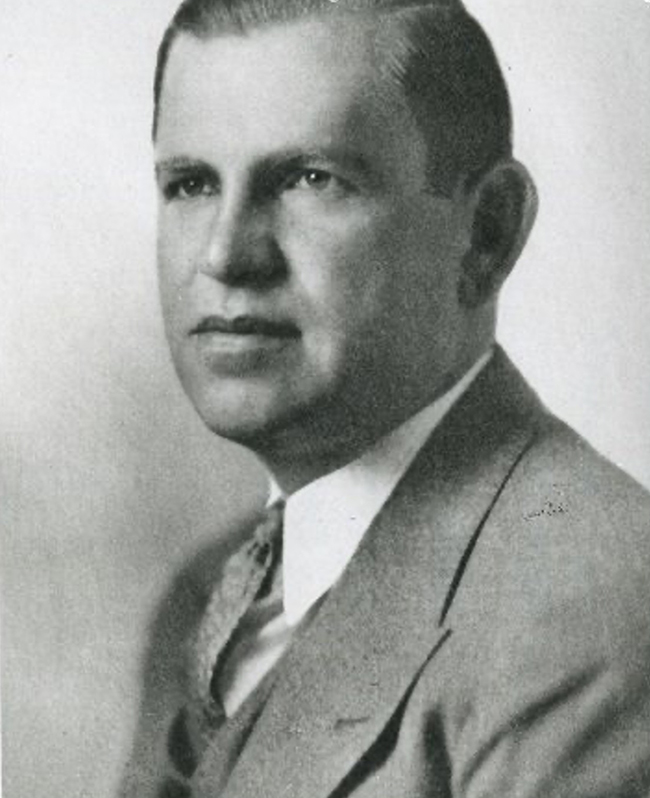Sons of Ukrainian immigrants built a pharmaceutical company and philanthropic legacy. Fund at The Trust supports New York City youth.
William Lasdon (1894-1984)
Stanley Lasdon (1909-1993)
In 1906, Rose “Reise” Finkelstein and Solomon Lasdon immigrated to New York City from the Ukraine with their small family and settled and grew in Brighton Beach, where Solomon worked as a blacksmith. They had two daughters and five sons, a close-knit family that built a pharmaceutical company and a generous foundation.
In a January 1956 interview in the Mount Vernon Argus, William Lasdon explained how the family business came about. He organized the Pyridium Corporation in 1925, he said, because he was interested in manufacturing pharmaceuticals and medical chemicals. Soon his older brother, Jacob, joined him.
“In those days,” William recalled, “there wasn’t enough basic research done in chemical compounds. It wasn’t the era of dynamic discoveries which we are in now. I felt we could make an important contribution in the field of medicine, and I’m happy to say we have.”
Early on, the company started investigating a chemical named pyridine, and it proved effective in treating many urinary ailments.
In 1927, they moved their plant to Nepera Park in Yonkers, home of the original Nepera Chemical Company founded in 1893 by Leo Baekeland, inventor of Bakelite, the first plastic to hold its shape when heated. As the company grew, their brother Milton came aboard as director of operations.
Stanley, who was 15 years younger than William, joined his brothers in 1936, after he graduated from St. John’s University law school. The following year, they created a new affiliate and reclaimed a bit of history by naming it the Nepera Chemical Company.
In 1942, the Lasdons moved both companies to a 29-acre site near Harriman, New York, where they began manufacturing niacin, a B vitamin, and niacinamide, a form of vitamin B3. They also created another division to make and market Anahist, an over-the-counter preparation for colds.
By 1956, the companies’ staff numbered more than 250 researchers, scientists and lab technicians, William said in the Mount Vernon Argus interview. He added that Nepera had developed and produced sulfadiazine, an antibiotic used to treat infections in the armed forces during World War II, and other drugs to treat pneumonia, ear infections, and asthma.
Later that year, Warner-Lambert bid to merge the companies in a deal worth an estimated $15 million. The brothers accepted the offer, and their companies were dissolved. In 1957, Warner-Lambert formed Nepera, Inc., as a subsidiary. William stayed on as a member of the board and the research committee, and Stanley became a vice president and director. Jacob was a director and officer as well.
Thirty years after the brothers sold their companies, the federal Environmental Protection Agency placed the Nepera site near Harriman on the Superfund program’s National Priorities List. About 83,000 tons of contaminated soil were removed, the EPA report said, and groundwater was monitored for chemicals. In 1998, a state Department of Environmental Conservation consent order required the Lasdon estate to pay into a remediation trust for the cleanup. In 2015, the entire plant was demolished.
Outside the office, the brothers led an active social and philanthropic life. They set up the Lasdon Foundation in 1946 to support medical research and the arts. Beneficiaries included Lincoln Center for the Performing Arts, and the New York Philharmonic. In 1989, the New York Hospital-Cornell Medical Center dedicated a new 10-story William and Mildred Lasdon Biomedical Research Center and Stanley S. Lasdon Teaching Laboratories.
William married Mildred D. Silverman in 1922, and they had a son, Robert, and a daughter, Nanette. In 1939, the Lasdons bought Cobbling Rock Farm, a 200-acre country retreat in Somers, New York, where they entertained friends, associates, diplomats and politicians. In 1976, they donated 22 acres to Westchester County for a wildlife preserve designated the Mildred D. Lasdon Bird and Nature Sanctuary.

William died in 1984 at age 88. Two years later, Westchester County purchased the farm from his estate for $4.2 million. Today, Lasdon Park and Arboretum is the horticultural hub of the county. The sprawling park ranges from woods, meadows, and nature trails to formal gardens with flowers and shrubs from all over the world.
Stanley, meanwhile, married Gene Schwarzer in 1942. They lived in Scarsdale, New York, for many years and raised a daughter, Susan, and two sons, Richard and Jeffrey.
In 1987, Stanley was awarded an honorary doctorate of science from the Long Island University College of Pharmacy and Health Sciences. He also was a sustaining member of the Albert Einstein College of Medicine.
After William passed, Stanley, as president of the Lasdon Foundation, made a grant to The New York Community Trust to establish the William and Stanley Lasdon Fund to support youth.
Stanley S. Lasdon, the last of the five brothers, died in 1993 at age 83.
